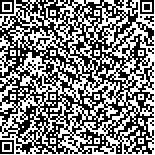刘雷,裴福兴,吕波,沈彬,杨静,周宗科.皮层体感诱发电位监测脊髓牵张性损害的实验研究[J].中华物理医学与康复杂志,2004,(9):
扫码阅读全文

|
| 皮层体感诱发电位监测脊髓牵张性损害的实验研究 |
|
| |
| DOI: |
| 中文关键词: 牵张性 脊髓损伤 皮层体感诱发电位 监测 |
| 英文关键词: Traction Spinal cord injury Cortical somatosensory evoked potential (CSEP) Monitoring |
| 基金项目: |
|
| 摘要点击次数: 2947 |
| 全文下载次数: 3605 |
| 中文摘要: |
| 目的探讨术中及术后皮层体感诱发电位(CSEP)对脊髓牵张性损害的监测作用。 方法切除大鼠T13~L2双侧椎板显露脊髓,用特制的脊柱撑开器放置在大鼠T12~L3椎体横突上纵向牵张,同时用CSEP进行术中、术后监测。40只SD大鼠随机分成对照组和CSEP P1-N1波幅下降30%,50%,70%组,观察术中、术后CSEP的变化,比较各组术后神经功能和病理检查结果。 结果随着撑开距离的增加,波幅下降至术前波幅30%组及正常组的CBS评分分别为(14.80±3.98)和0分,神经元计数分别为(79.60±3.53)个和(82.70±3.41)个,二者相比差异无显著性意义。光镜下脊髓神经元体积稍小,神经纤维形态正常;波幅下降50%及70%组的CBS评分分别为(52.10±6.12)和(74.60±8.97)分,神经元计数分别为(67.80±3.85)个和(45.70±4.42)个。与正常组及30%组相比差异有显著性意义(P<0.01)。光镜观察神经元间隙增大,神经元退变、减少、溶解或坏死,脊髓结构破坏,出现片状出血灶,大量胶质细胞浸润。 结论CSEP对脊髓牵张性损害具有良好的监测作用,对脊髓神经功能和预后判断具有重要价值。 |
| 英文摘要: |
| Objective To evaluate the value of intraoperative and postoperative recording of cortical somatosensory evoked potential(CSEP) in monitoring of tractive spinal cord injury. MethodsT13~L2 Spine were tracted longitudinally with a special spinal tractor that was put on proccessus transverses of T12~L3 vertebrae of rat after exposing T13~L2 spinal cord via dual laminectomy, at the same time, spinal cord function was monitored by cortical somatosensory evoked potential (CSEP) recorded intraoperatively and postoperatively. Rats were randomly divided into a control and an observation groups, with the later being further divided into 3 subgroups according to extent of decrease of the amplitude of CSEP P1-N1 wave, corresponding to 30% (group 1), 50% (group 2) and 70% (group 3) of decrease, respectively. Change of CSEP was recorded intraoperatively and postoperatively, neurobehavioral function and pathologic finding were compared among the 4 groups. ResultsWith traction of the spine, compared with control group, group 1 had no significant difference in CBS score, neuron count, but group 2 and group 3 had significant difference (P<0.01). Light microscope showed that neuron volume was small slightly in group 1, neuron space was enlarged and neuron was degenerative, reductive, dissolve or necrotic, spinal cord structure was destroyed in groups 2 and 3. ConclusionCSEP can be used to monitor tractive spinal cord injury. CSEP is of great value in evaluation of spinal cord function and prognosis of tractive spinal cord injury. |
|
查看全文
查看/发表评论 下载PDF阅读器 |
| 关闭 |
|
|
|